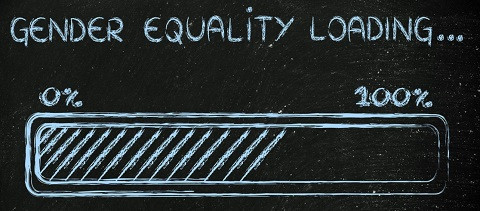
GCED Basic Search Form
Quick Search
현재 위치
뉴스

By Stefania Giannini, Assistant Director-General for Education at UNESCO and Carmen Burbano, Head of School Health and Nutrition, World Food Program.
Last year, António Guterres, the Secretary-General of the United Nations warned that with 250 million school-age children out of school, the world was “facing a learning crisis”.
One year on, with the coronavirus pandemic in full swing, he declared that we face a “generational catastrophe that could waste untold potential, undermine decades of progress and exacerbate entrenched inequalities”.
Even before COVID-19, more girls than boys were out of school. While many girls will continue with their education once schools reopen, others may never return to school. UNESCO has estimated that globally, 23.8 million children, adolescents and youth from pre-primary to tertiary are at risk of not returning to school in 2020, including 11.2 million girls and young women.
We could see the reversal of 20 years of gains made for girls’ education.
To avert this threat, we need to reimagine how we deliver good quality and gender inclusive education. This starts with expanding the concept of ‘education’ itself to include the wellbeing of children, particularly girls, which in turn calls for urgent and substantial investments in school-based health and nutrition services.
By mid-April, COVID-19 pandemic related lockdowns were keeping a staggering 94 percent of pupils worldwide out of school – half of them girls. These children were immediately deprived of their regular education, but not that alone. It is at school that children - especially the poorest - get vital nutrition and health support allowing them to learn. In the poorest communities, schools are among the most important structures of family cohesion and support.
Schools are where poor families access support and incentives, both financial and non-financial, aimed at addressing structural inequalities. Without the school platform, and without the access to health and nutrition programmes, hunger, poverty and malnutrition are exacerbated for hundreds of millions of children and their families, affecting their chances of ever recovering from the COVID-19 induced crisis.
Girls and adolescents systematically lack equal access to education and are at particular risk. From past pandemics we know that many girls won’t return to school when they re-open, as families consider the financial and opportunity costs of educating their daughters. School health and nutrition, including access to water and sanitation, sexual and reproductive healthcare and school meals, among others, provide an incentive for families to send girls back to school, help them stay in school, especially into adolescence, effectively preventing early marriage and delaying first pregnancy.
Educating girls is one of the most effective strategies to combat child marriage, especially as they progress to secondary school. When a girl remains in secondary school, she is six times less likely to marry young – and to avoid being trapped into poverty, social exclusion, violence and chronic ill-health. Boys and girls who are healthy and nourished are less likely to miss out of school and learn better. When the health and nutrition of children are improved, the rest of their life will be transformed.
More than 70 countries have adapted their programmes to continue supporting girls and boys during school closures through take-home rations, vouchers or cash transfers. WFP has reached 7 million children in 45 of the poorest countries. UNESCO’s Global Education Coalition has just launched a Girls Back to School Campaign to ensure girls’ continuity of learning and their safe return to school when schools reopen. As part of the campaign, UNESCO, together with UNGEI, UNICEF, Malala Fund and Plan International have produced the Building Back Equal: Girls Back to School Guide to help policymakers and practitioners address the gender dimensions of COVID-related school closures, with targeted recommendations.
Only by investing in girls, and injecting resources in school and nutrition programmes will we be able to ensure that a whole generation of girls and adolescents are not left behind. School is a place where a community and a child’s broader needs are addressed – and we all need to keep that lesson in mind as we defend SDG 4 in this unprecedented crisis.
Faced with the risk of losing millions of students in the classroom, global leaders are coming together in a campaign to #SaveOurFuture and demand that we shore up the necessary funding and policy changes to go beyond repairing the pre-pandemic status quo, and actually build back a better and inclusive education system.
A World Bank report, launched in partnership with the Malala Fund, shows that if all girls completed secondary school, women and girls could add up to $30 trillion to the global economy. As we stare down the barrel of the steepest recession in modern history, let’s consider the trillions to be gained from this sort of investment in girls’ education. Redefining the meaning of ‘education’ to encompass the wellbeing of children could be game-changing. Failing to do so will indeed be catastrophic.
URL:
